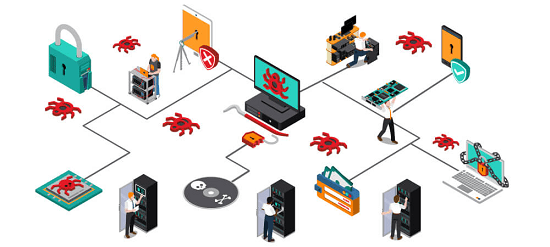One big mistake that a company can make when it comes to cybersecurity is taking a reactive approach. Its procedure only focuses on finding and removing the malware after it attempts to infiltrate an endpoint threat hunting.
The goal is to stop the attack before the damage gets worse, which can be bad in the long term. A reactive approach provides many opportunities for attackers to invade the system.
Paying for the breach can also cost a lot, and it damages a company’s reputation as well. Thankfully, a method known as endpoint threat hunting can offer a proactive cybersecurity approach for companies.
Endpoint Threat Hunting
Endpoint threat hunting involves searching for unknown cyber threats within a network. This technique is in contrast to the reactive approach, as it aims to find threats before they attack the systems. That way, it enables a company to conduct a comprehensive search for potential threats throughout the whole system.
What are the Types of Endpoint Threat Hunting Companies may Encounter?
Before diving deep into the topic, it is crucial to understand the four types of cyber threats first. These types include:

Known/Knowns
A threat that is already inside and visible in the system.
Known/Unknowns
A threat that can possibly infiltrate the network. But, the security system hasn’t detected the threat to be inside the network yet.
Unknown/Knowns
The security system has detected an unknown threat in the network. But, you have no idea what the threat is about and how to eliminate it.
Known/Unknowns
These threats are unknown, and a security system cannot detect it. It is the most dangerous cyber threat that a company can face since it exists in unknown locations.
What Are the Procedures Involved in Endpoint Threat Hunting?
Endpoint threat hunting requires the threat hunters to follow a specific procedure. These steps include:
-
Hypothesis generation
The first step includes researching the latest threats. That is because the threat hunters must decide on a specific threat to focus on before conducting a search.
-
>Gathering threat data
The next step involves collecting the data of that threat. Threat hunters should also be able to customize the tool to fit the needs of gathering the data.
-
Reviewing the data
After gathering the information needed, threat hunters would then review the data. They would search for any suspicious activities that could lead to a potential threat.
-
Investigation
This step is where the threat hunters must determine whether the hypothesis was correct or not. If it is correct, the threat hunters will conduct a further examination of the vulnerability.
-
Intelligence
Intelligence requires the threat hunters to develop a sensor that can operate in real-time. This step is optional as it requires a lot of resources to do this procedure. But, it is a good endpoint threat hunting practice.
What are the Benefits of Endpoint Threat Hunting?
As said earlier, endpoint threat hunting provides a proactive approach. The companies will be able to defend their IT systems even before the attackers can invade the network. But, what exactly are the benefits of endpoint threat hunting? Let’s take a look below:
- It can detect a potential threat earlier, which reduces the risk of security breaches.
- Secures the organization’s data from the attackers
- Provide the threat hunters a better insight into the cyber threat
- Reduce the damage because of the proactive approach’s fast response
- Stop the attackers infiltrating the network by being aware of the hidden or unknown threats
- Protects the reputation of an organization
What Are the Risks That a Company Might Face if They Don’t Hunt for Threats Proactively?
One benefit of endpoint threat hunting is that it is a proactive cybersecurity approach. Meaning, companies can search for potential threats and plan a strategy before the attackers infiltrate the network.
If a company does not hunt for threats proactively, it increases the risk of breaches. When a breach occurs, there is no guarantee that a company will be able to stop the attack right away.
It can also cost a lot to recover from a breach. That is true, especially if the IT systems have gained enormous damage and data loss.
Furthermore, news can spread like wildfire if a breach occurs with the company’s name on headlines. That is never good as it damages the reputation of the company.
Of course, it is important to note that having a proactive approach does not guarantee 100% effectiveness. Cyber threats are inevitable, and slip-ups can happen from time to time. But, having an endpoint threat hunting strategy reduces the risk of security breaches from happening. That is because it allows a company to scan the network beforehand and identify any potential threats within the system.
Need endpoint protection? Contact Xcitium today.
